The origin of cosmic rays is a pivotal open issue of high-energy astrophysics. Supernova remnants are strong candidates to be the Galactic factory of cosmic rays, their blast waves being powerful particle accelerators. However, supernova remnants can power the observed flux of cosmic rays only if they transfer a significant fraction of their kinetic energy to the accelerated particles, but conclusive evidence for such efficient acceleration is still lacking. In this scenario, the shock energy channeled to cosmic rays should induce a higher post-shock density than that predicted by standard shock conditions. Here we show this effect, and probe its dependence on the orientation of the ambient magnetic field, by analyzing deep X-ray observations of the Galactic remnant of SN 1006. By comparing our results with state-of-the-art models, we conclude that SN 1006 is an efficient source of cosmic rays and obtain an observational support for the quasi-parallel acceleration mechanism.
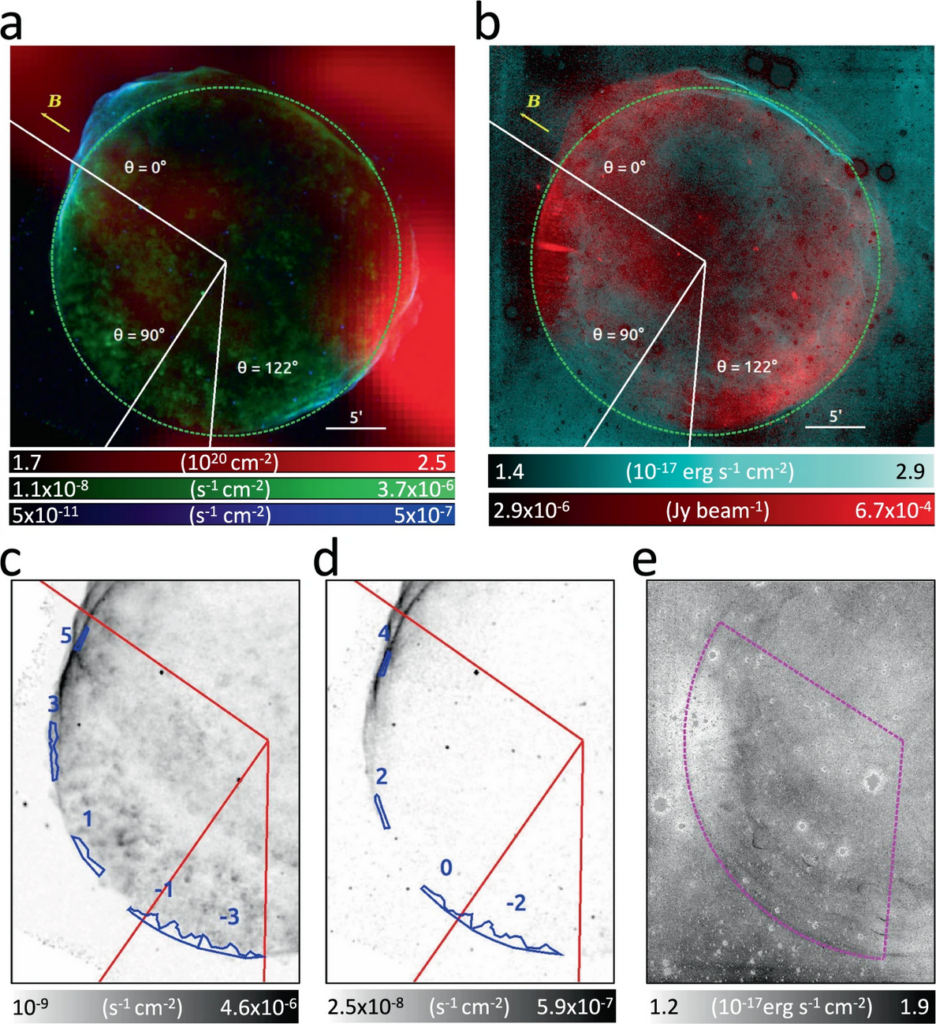
Full Article:
Giuffrida, R., Miceli, M., Caprioli, D., et al. (2022). The supernova remnant SN 1006 as a Galactic particle accelerator. Nature Communications, 13, doi: 10.1038/s41467-022-32781-4
License: CC BY 4.0






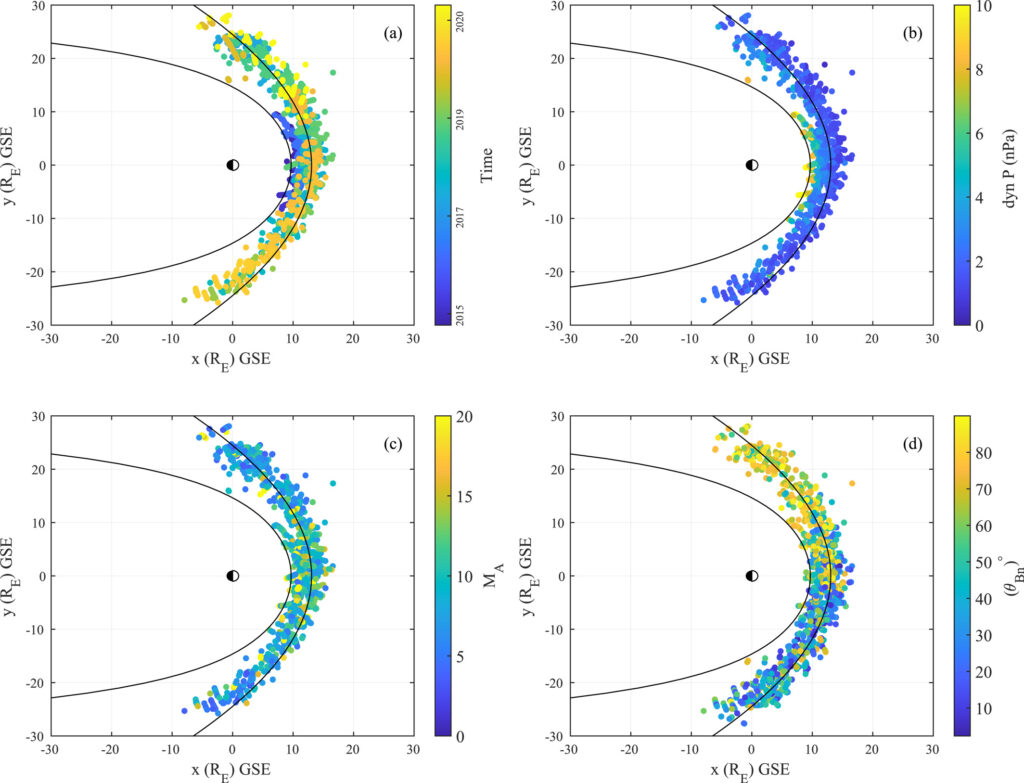
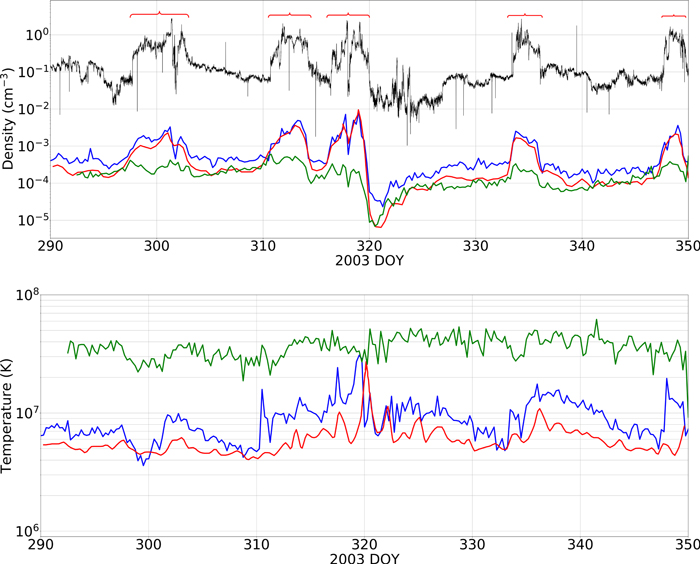
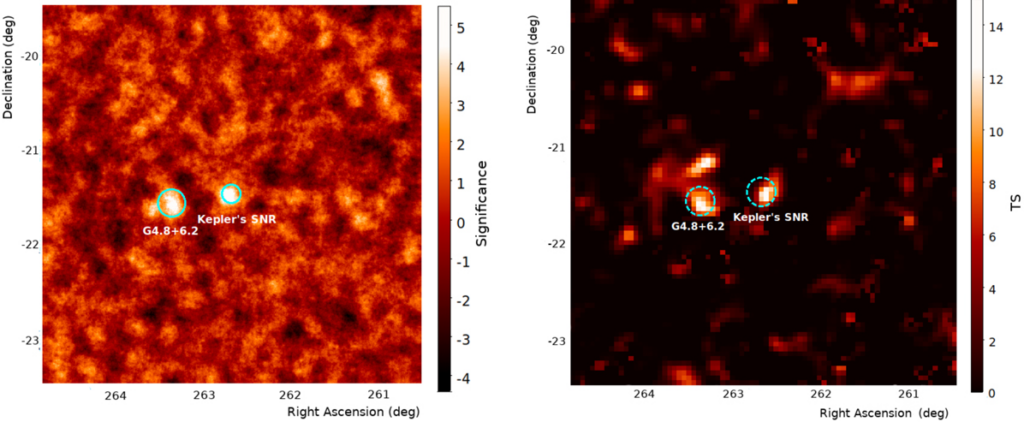
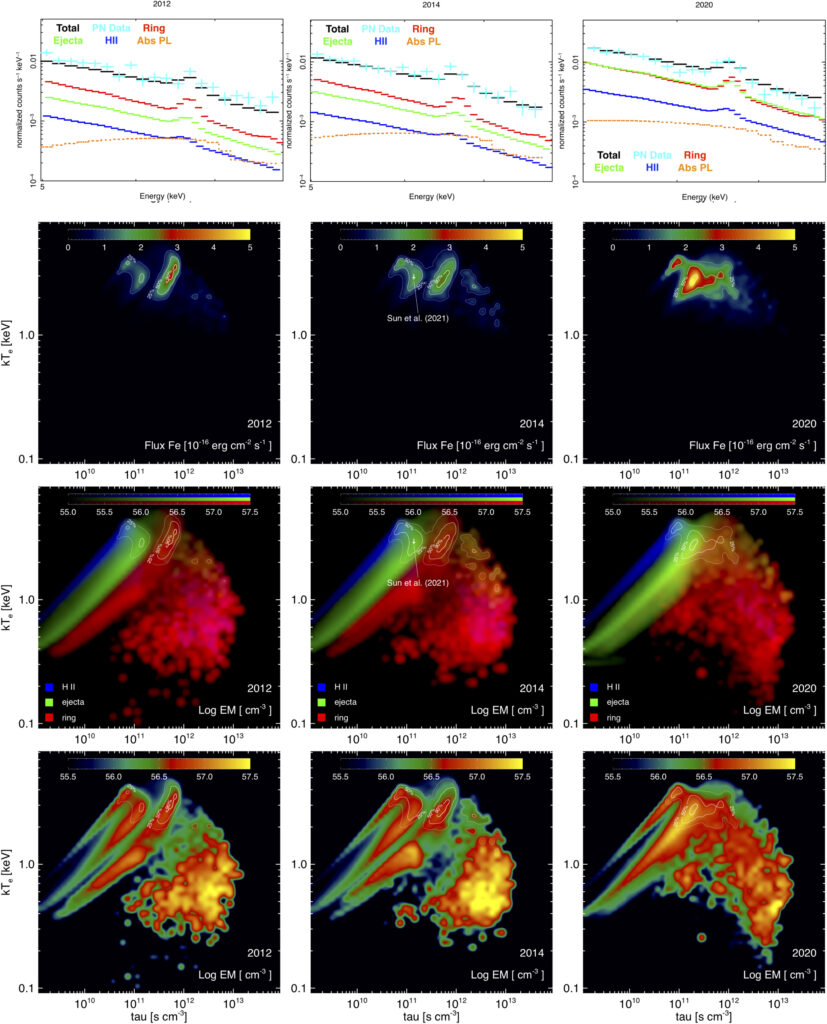
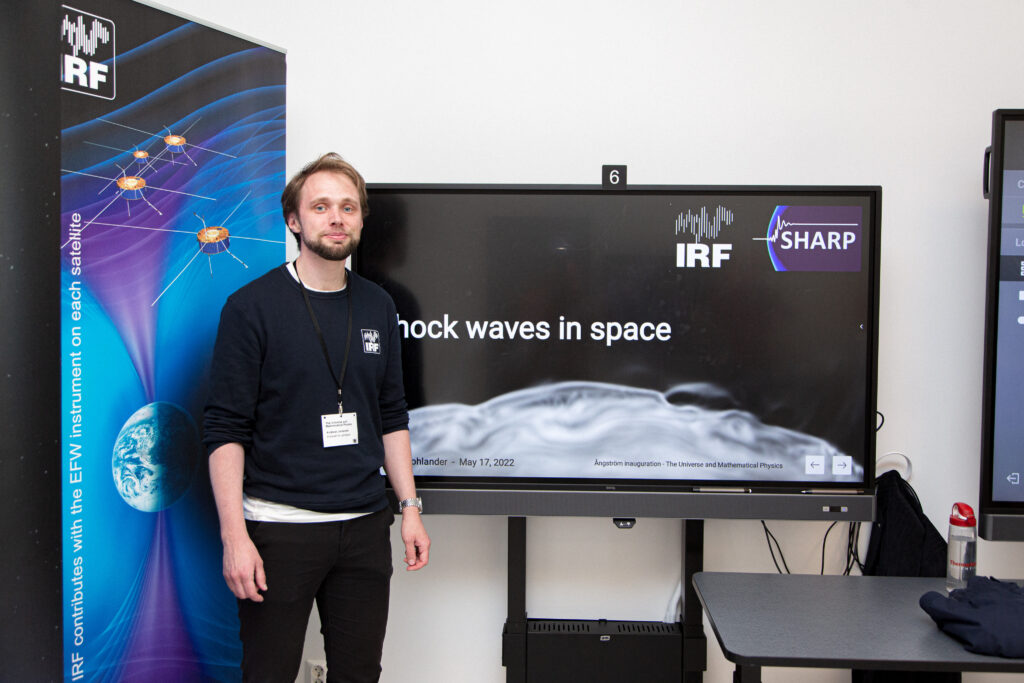
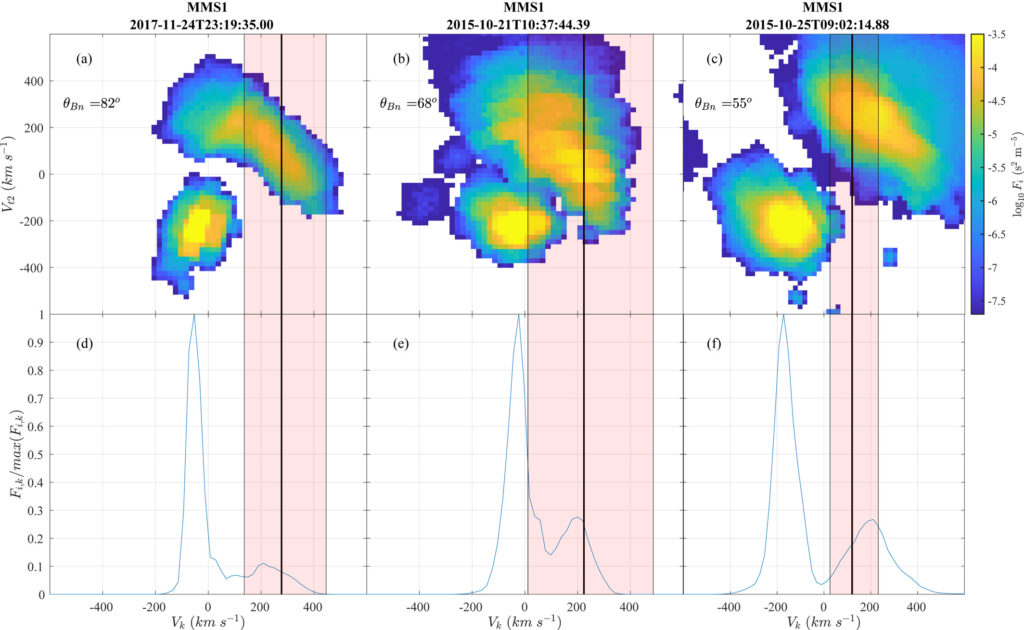
 plane (top row) and 1D velocity distribution functions (VDFs) reduced in the k direction (bottom row) for three different events with θBn = 82° (a, d), 68° (b, e), and 55° (c, f). The black line shows the wave phase speed and the pink-shaded area shows its 2σ interval. The times indicate the center of the 150 ms acquisition interval of the ions VDFs.
plane (top row) and 1D velocity distribution functions (VDFs) reduced in the k direction (bottom row) for three different events with θBn = 82° (a, d), 68° (b, e), and 55° (c, f). The black line shows the wave phase speed and the pink-shaded area shows its 2σ interval. The times indicate the center of the 150 ms acquisition interval of the ions VDFs.